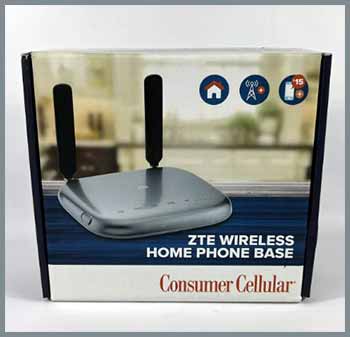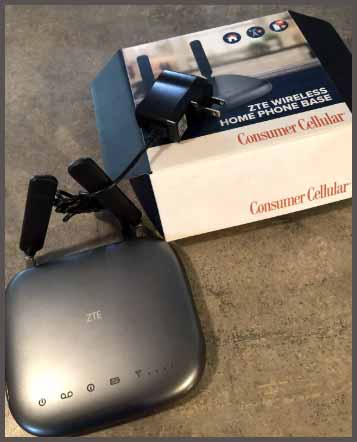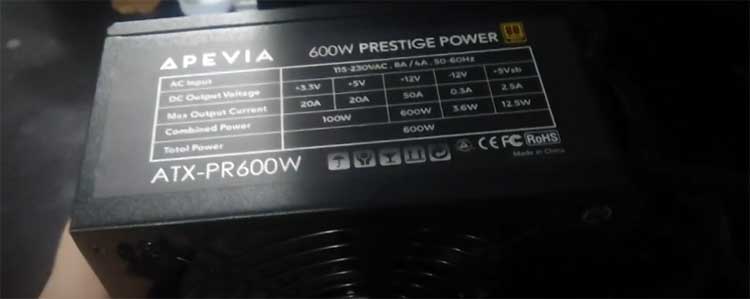I thought I’d struck gold with the Consumer Cellular Home Phone Base—a sleek little box promising to zap my old landline into the wireless age. No cords, no fuss, just plug in and go, right?
Well, not quite. What started as a hopeful upgrade spiraled into a tangle of glitches that tested my patience and my sanity. In this article, I’m spilling the beans on the real-user headaches I faced, breaking down each issue with a clear-eyed look so you can decide: is this gadget a hidden gem or a shiny letdown?
List of Consumer Cellular Home Phone Base Problems
Here’s a quick rundown of the problems I faced:
- Connectivity and Signal Woes
- Call Quality That Falls Flat
- Porting Nightmares
- Battery and Power Struggles
- Customer Support That Left Me Hanging
Now, let’s unpack each one so you can see exactly what I dealt with—and why it mattered.
Connectivity and Signal Woes

The Consumer Cellular Home Phone Base is marketed as a device that works anywhere there’s a cellular signal and an electrical outlet.
Sounds great, right?
That’s what hooked me in the first place—I live in a suburban area with decent cell coverage, so I figured I’d be golden.
But here’s the catch: the reality didn’t match the promise.
The first time I set it up, all the lights on the device glowed green, which I assumed meant everything was good to go.
I plugged in my trusty cordless phone, heard a dial tone, and felt like I’d cracked the code to modern home telephony.
Then I tried making a call. Busy signal. Every. Single. Time. I double-checked the setup—cables secure, power on, signal bars showing strong—and still, nothing but that annoying buzz in my ear.
After some digging, I realized the issue wasn’t my setup but the device’s reliance on Consumer Cellular’s network, which piggybacks off AT&T or T-Mobile towers depending on your area.
My neighborhood gets solid AT&T coverage for my smartphone, but this home base seemed to struggle to latch onto a stable signal. It’s like it was playing a game of telephone with the tower, and I was losing every round.
I even tried moving it around the house—near windows, higher shelves, you name it—but the results were inconsistent. One day it’d work fine, the next I’d be back to busy signals or dropped calls.
What’s frustrating is that this isn’t just my story. I’ve seen others online echo the same sentiment: the device’s signal pickup can be finicky, especially if you’re not in a prime coverage zone.
For a product pitched as a portable solution, this inconsistency is a major letdown. If I’m taking this on an RV trip or to a vacation home, I need to know it’ll work—not roll the dice on whether I’ll get a signal.
Call Quality That Falls Flat
When the Consumer Cellular Home Phone Base did manage to connect, I was hopeful the call quality would impress me. After all, it’s supposed to mimic a landline experience, and I’ve always appreciated the clarity of those old-school calls. Spoiler alert: it didn’t deliver.
My first test call was to my sister. She picked up, and I could hear her, but it sounded like she was talking through a tin can underwater. There was this weird echo, and her voice kept cutting in and out.
I asked if she could hear me okay, and she said I sounded “muffled, like you’re in a tunnel.” Not exactly the crisp, reliable connection I was banking on.
I tried a few more calls—friends, family, even a quick chat with my dentist’s office—and the pattern held. Sometimes it was static, other times a deep bass hum that made me feel like I was in a sci-fi movie gone wrong.
I started wondering if my cordless phone was the culprit, so I swapped it out for a basic wired handset. Same deal. The problem wasn’t my equipment; it was the home base itself.
Here’s where I got analytical. The device uses cellular technology, not a traditional landline’s copper wiring, so it’s at the mercy of the network’s quirks. If the signal’s weak or there’s congestion on the tower, your call quality takes a hit. Compare that to my old AT&T landline, which was rock-solid even during storms, and the gap is glaring.
For a device aimed at seniors or folks who want simplicity, this kind of inconsistency is a dealbreaker. I don’t want to strain to hear my grandkids’ voices—or worse, miss an important call because the line sounds like a bad radio station.
Porting Nightmares

One of the big selling points of the Consumer Cellular Home Phone Base is that you can keep your existing phone number.
I’ve had my home number for over a decade—it’s tied to everything from doctor’s offices to online accounts—so that feature was a huge draw.
But oh boy, did the porting process test my patience.
I kicked things off by calling Consumer Cellular to transfer my number from my old landline provider. The rep was friendly enough, assuring me it’d take a few days tops.
A week later, my landline was still active, and the home base was sitting there with a temporary number.
I called back, and they said the delay was because porting a landline number is “more complex” than a cell number. Fair enough, I thought—until two weeks passed, and I was still in limbo.
Finally, the number switched over, but here’s the kicker: for a few days after, incoming calls still rang on my old landline, not the home base. Outgoing calls worked fine, but if someone tried to reach me, I’d miss it entirely.
I reached out again, and the explanation was vague—something about “residual routing” with my previous provider. It eventually sorted itself out, but those hiccups left me stressed and skeptical.
Looking back, I should’ve seen it coming. Porting isn’t unique to Consumer Cellular—any carrier can hit snags—but the lack of clear communication made it worse. If you’re considering this device and want to keep your number, brace yourself for potential delays and crossed wires.
For me, it was a hassle that overshadowed the convenience I’d hoped for.
Battery and Power Struggles
The Consumer Cellular Home Phone Base comes with a backup battery, which is a smart feature on paper. If the power goes out, you’re not left phoneless—perfect for emergencies, right?
Well, my experience with it was less than stellar.
The battery is a lithium-ion pack, and the manual claims it’ll keep the device running for a few hours during an outage. I decided to test this one stormy night when our neighborhood lost power. The home base stayed on, which was a relief, and I made a quick call to check in with a neighbor.
All good so far. But after about an hour, the device started beeping—a low-battery warning. By hour two, it shut off completely.
Two hours isn’t terrible, but it’s not exactly reassuring either. My old landline worked as long as the phone company’s lines were up, no battery needed. Plus, I noticed the battery didn’t hold a charge as well after a few months.
I’d unplug the device to move it—say, to another room—and it’d die faster than I expected. Online chatter suggests this isn’t uncommon; some users have even reported swollen batteries after a year or two, which is a safety red flag I can’t ignore.
The power cord itself is another gripe. It’s short, so I had to rearrange furniture to get the base near an outlet. And if you’re in an RV or hotel, good luck finding a spot that’s both signal-friendly and close to power.
For a device billed as “completely portable,” these limitations feel like a contradiction. I wanted freedom, not a tether to a wall socket or a dying battery.
Customer Support That Left Me Hanging

When I hit these snags, I turned to Consumer Cellular’s customer support, hoping for a lifeline.
They’re known for U.S.-based reps and high satisfaction ratings, so I had optimism. That optimism didn’t last long.
My first call was about the connectivity issue.
After 15 minutes on hold—apparently, they were “experiencing high call volume”—I got a rep who walked me through basic troubleshooting: unplug it, plug it back in, move it to a window.
No dice.
They suggested it might be a coverage issue and told me to call back if it persisted.
No follow-up, no escalation—just a polite “good luck.”
The porting mess was even worse. I called multiple times, and each rep gave me a different timeline or excuse. One promised a callback from a supervisor that never came. Another suggested I contact my old provider myself, which felt like passing the buck.
By the third call, I was exasperated—why am I doing their job?
Don’t get me wrong—the reps were nice enough, but nice doesn’t fix a faulty device or a botched number transfer. I started wondering if their acclaimed support was stretched thin or just not equipped for trickier issues like mine.
For a product aimed at simplifying life, the support experience added a layer of frustration I didn’t sign up for.
Alternatives To Consumer Cellular Home Phone Base
Before I wrap up with some FAQs, let’s talk options. If my saga has you second-guessing the Consumer Cellular Home Phone Base, here are four alternatives worth a look:
- Ooma Telo – This VoIP device connects to your internet instead of a cellular network, offering crystal-clear calls and low monthly fees (just taxes, around $5). You can keep your number, and it’s a one-time purchase around $100. No signal woes, but you’ll need reliable Wi-Fi.
- Verizon Wireless Home Phone Connect – Similar to Consumer Cellular’s offering, this uses Verizon’s robust network. It’s pricier—about $20/month plus the device cost—but I’ve heard fewer complaints about connectivity and call quality. Great if you’re in a Verizon-strong area.
- MagicJack – Another VoIP option, MagicJack is dirt cheap (under $50/year after the initial device buy) and plugs into your internet router. It’s simple, portable, and lets you keep your number, though call quality depends on your internet speed.
- Straight Talk Wireless Home Phone – This cellular-based unit runs on Verizon’s towers and costs around $15/month after a $100 upfront fee. It’s a solid middle ground—decent coverage, no internet required, and a straightforward setup.
Each has its trade-offs, but they sidestep some of the pitfalls I hit with Consumer Cellular. Pick based on your coverage, budget, and whether you’re okay with internet reliance.
Frequently Asked Questions (FAQ)
Unplug the power cord, wait 30 seconds, then plug it back in. Give it a minute to reboot—all lights should turn green if it’s working.
It uses a cellular signal (AT&T or T-Mobile) to turn your regular phone into a wireless line. Plug your handset into the base, and it connects via the network—no landline needed.
Same deal: unplug it from power, wait half a minute, then plug it back in. It’ll restart and try to reconnect to the network.
It taps into a cellular network instead of a phone jack, letting you use your existing phone anywhere there’s signal and power. Think of it as a cell phone in a box for your house.
Conclusion: My Takeaway—and Yours
Looking back, my time with the Consumer Cellular Home Phone Base was a rollercoaster. I loved the idea—ditching my landline for something flexible and modern—but the execution?
Not so much. Between spotty signals, subpar calls, porting chaos, battery blues, and support that couldn’t keep up, it felt like more trouble than it was worth. I wanted simplicity and reliability, and instead, I got a puzzle I had to solve myself.
For you, I’d say this: if you’re in a strong coverage area and don’t mind some tinkering, it might work. But if you crave consistency—or just don’t have the patience for tech hiccups—think twice.
You’ve got options out there that might save you the headaches I endured. Weigh your needs, check your signal, and maybe give one of those alternatives a shot. After all, your phone should make life easier, not harder—right?

Thanks for these details. Just got another CC ad for their landline at 15/mth. I called Verizon who provides our fios and landline. removing the landline would reduce our bill by 20/mth. The $5 savings a month is not compelling, and your story and others I read make me realize that I’m sticking with Verizon. We don’t use landline much, but it works and is reliable.